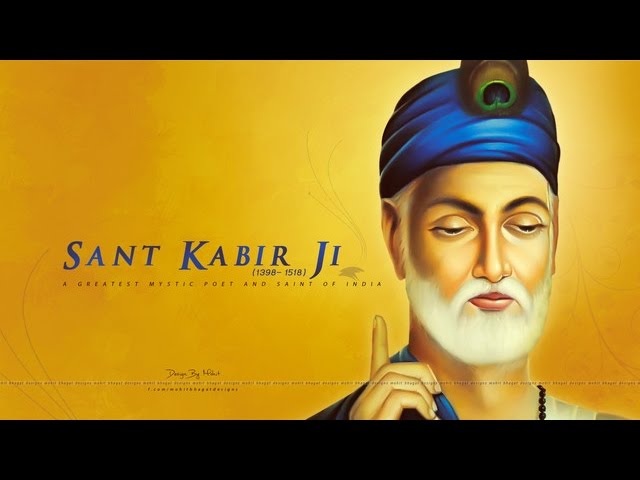Swami Chaitanya Keerti
Kashmir is a paradise on earth–there’s no doubt about it. But this paradise has deteriorated to be a hell on earth for decades until now. It is because it allowed the parochial political people to rule the land. These people made a mess of everything in Kashmir and its simple people. The Kashmir lovers who were always happy to come and live a heavenly life there for a few days gradually became afraid to visit this part of the earth. The visitors were always enriching the state and making the hosts happier. It was shared happiness and joy of living together in a friendly atmosphere. Happiness, joy, and friendliness are the base of economic growth of any place. If people of the world are afraid to visit any place, the place becomes isolated and loses its charm–it becomes its own imprisonment. And certainly, Kashmir has been suffering all this–the atmosphere of imprisonment, the alienation, the hatred, and terrorism. Who is responsible for this? The clear answer is: the politicians and the people of Kashmir, who trusted their politicians blindly and were led by them into years of darkness. Happy Ho organizes best Meditation and Tarot classes in Noida and Delhi NCR area in India.
For the people of Kashmir, now is the time to realise this and open up to embrace the world and be embraced by the world. It has to take the first step of flowing with the mainstream consciousness of India and its vision of Vasudhaiv Kutumbakam: This whole earth is one family of the divine. Let Kashmir attain the crowning glory again–better than it ever had in the past. Many people do not know that Kashmir was the land of sages–where both Jesus and Moses came to live peacefully and die peacefully.
The enlightened mystic, Osho tells us ( God Is Dead, Now Zen Is the Only Living Truth) about all this in detail quoting a Russian author who wrote a book, which is available, in which he describes the whole thing. But as Christians came to know this – and the country was under British rule – they destroyed those pages from the Ladakh monastery in which Jesus’ description was given. Just those two pages are missing. And one can see that two pages are missing because all the pages are numbered. You can see in that Russian explorer’s book that exactly those two pages are mentioned with their page numbers. It was the British Empire which destroyed those two pages to make sure that nobody claimed Jesus was here in India and Ladakh, and perhaps Tibet. But there is a grave in Kashmir, near Pahalgam… It is such a coincidence that there is Moses’ grave, and just by the side of it is Jesus’ grave. Both came to India. Moses came in his old age in search of the lost tribe of the Jews who had come to Kashmir and settled in Kashmir. He was too old then to go back to Jerusalem, and Kashmir really looked like God’s land, it was so beautiful. There is nothing comparable to Kashmir in the whole world. He remained and died there. Jesus came and he remained long enough… He lived up to one hundred and twelve years of age. Everything is written on his grave.
“Those two graves are the only graves of Jews in India because in India there are no Jews. And the inscription is in Hebrew. In India nobody knows Hebrew, and in India only Mohammedans make graves; Hindus burn the body. Mohammedans’ graves have to be directed toward Kaaba; the head has to be toward Kaaba. Even when dying, the dead man cannot be allowed to have his
feet toward Kaaba; that would be insulting. So in all Mohammedan graves, the head is directed toward Kaaba. Only these two graves are not directed toward Kaaba because they are not Mohammedan graves. Out of all the graves in India – and I have looked in so many cemeteries just to find one grave – only those two graves are not directed toward Kaaba. All the other Jews who had settled in India have been forced to become Mohammedans. When Mohammedan rule came over India they turned all the Jews
into Mohammedans. Only one Jewish family has been left to take care of those two graves because Mohammedans respect both Moses and Jesus. So that family, traditionally, generation after generation, has been taking care.
“The name of the nearest village is Pahalgam; in Kashmiri it means the village of the shepherd. Jesus used to call himself the shepherd. He used to call humanity the sheep – and he was the shepherd! So Pahalgam makes sense; it is the village of the shepherd. And just outside Pahalgam are those two graves. Jesus never died on the cross and was never resurrected. All that is just fiction created by Christians. No contemporary literature of Jesus’ time even mentions his name. You cannot believe it: if a person walks on water, cures people just by touching, if blind people start seeing, the deaf ones start hearing, the dead come alive, do you think the whole country will not be talking about him? All the newspapers, all the literature will mention him. Such a man cannot be neglected. But no contemporary literature even mentions his name.”
About two centuries before Meera, in the early 14th century, in Kashmir, there lived a beautiful woman mystic named Lalla, who went through all the struggles in her unfriendly family and the world, same as Meera did. Meera’s path was only one dimensional of love and devotion to Lord Krishna while Lalla’s path was multidimensional. She was a Yogin, an Advaita (seer) and a devotee of Lord Shiva, who renounced her husband and his family to meditate and wander everywhere for her sadhana. Though her journey was very arduous, she did all kinds of sadhanas with total sincerity, authenticity and love.
Lalla was as beautiful as the land she belonged to. With the inner radiance and fragrance of her meditation, she looked otherworldly and celestial. She was always in ecstasy, moving and dancing in samadhi. This exalted state of consciousness is attained when one transcends the mind. Mystics like Gorakh Nath and Kabir describe it as unmani avastha – transcending the mind and getting drunk on the divine. She lived so naturally that she did not bother to wear clothes to cover herself. It is really surprising that she had the a courage to live naked in those days. It is not possible even today, as the civilised society today would take such a woman to some mental hospital or imprison her.
Lalla’s poetic expressions are as mystical as of saint Kabir. Kabir sang songs of samadhi: Bahari khoj janam gavaya, unmani dhyan dhan bheetar paya (There’s no need to waste your life in the world outside as all the wealth of meditation, self-realisation can be found within.) She used to sing:
Some, who have closed their eyes, are wide awake
Some, who look out at the world, are fast asleep
Some who bathe in sacred pools remain dirty
Some are at home in the world but keep their hands clean
Osho remembers her in the Books I Have Loved. He tells us: “Lalla was one of the most beautiful women… She remained naked, disowned everything, renounced everything still no one came to her to say that her behaviour was obscene. On the contrary, in Kashmir they have a proverb: ‘We know only two words which are meaningful; one is Allah, and another is Lalla.’”
I wish to remind all the common people of Kashmir not to follow their greedy and violent politicians–but return to the meditative and loving quality of mysticism. Invite the seekers of the whole world to meditate and celebrate in Kashmir. Choose the glory of ever-rising consciousness of Himalayan peaks. This is your birth-right!



